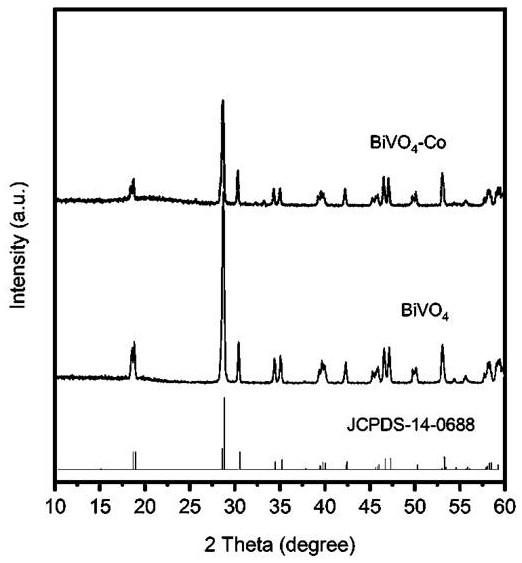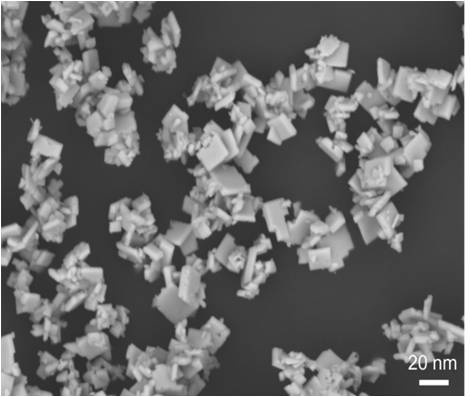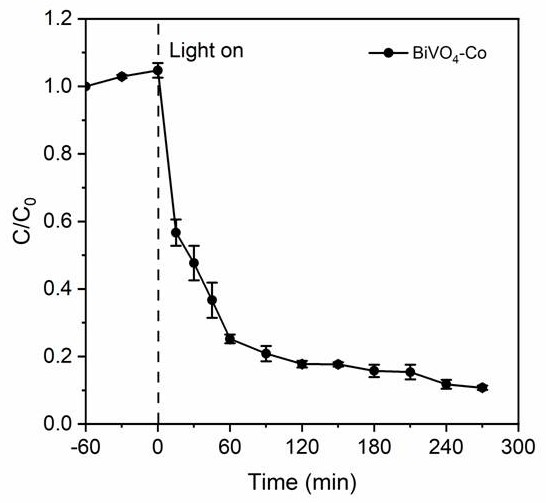Transition metal oxide modified bismuth vanadate photocatalyst for efficiently degrading antibiotics in water
A transition metal, bismuth vanadate technology, applied in metal/metal oxide/metal hydroxide catalysts, physical/chemical process catalysts, water pollutants, etc., can solve problems such as large pH fluctuations, microbial toxicity, and many impurities , to achieve the effect of effective utilization, environmental protection and green cost, and realization of resources
- Summary
- Abstract
- Description
- Claims
- Application Information
AI Technical Summary
Problems solved by technology
Method used
Image
Examples
specific Embodiment 1
[0021] The present invention will be described in detail below in conjunction with specific embodiment 1.
Embodiment 1
[0023] 1) Add 10 mM vanadium pentoxide and 10 mM bismuth oxide to a diluted 0.5 M nitric acid solution, and stir in a beaker for 5 days to obtain a uniformly mixed yellow solution;
[0024] 2) Transfer the uniformly mixed yellow solution to the reaction kettle and heat it for 12 hours;
[0025] 3) Suction filter the bismuth vanadate sample after hydroheating, wash with distilled water several times, and dry at 60°C to obtain powdered bismuth vanadate;
[0026] 4) Using the molten salt method in BiVO 4 Surface supported transition metal Co oxide nanoclusters, the BiVO 4 Add 40 mg of powder and transition metal salt into the molten salt, roast at a high temperature at 400°C, filter the obtained sample a, and dry it at 60°C;
[0027] 5) 50 mg of the sample a with the loaded co-catalyst was added to the wastewater containing the antibiotic-norfloxacin 20 mg / L. After half an hour of adsorption in the dark, add peroxymonosulfate 1 mM, immediately expose to visible light, and take...
PUM
 Login to View More
Login to View More Abstract
Description
Claims
Application Information
 Login to View More
Login to View More - R&D
- Intellectual Property
- Life Sciences
- Materials
- Tech Scout
- Unparalleled Data Quality
- Higher Quality Content
- 60% Fewer Hallucinations
Browse by: Latest US Patents, China's latest patents, Technical Efficacy Thesaurus, Application Domain, Technology Topic, Popular Technical Reports.
© 2025 PatSnap. All rights reserved.Legal|Privacy policy|Modern Slavery Act Transparency Statement|Sitemap|About US| Contact US: help@patsnap.com



